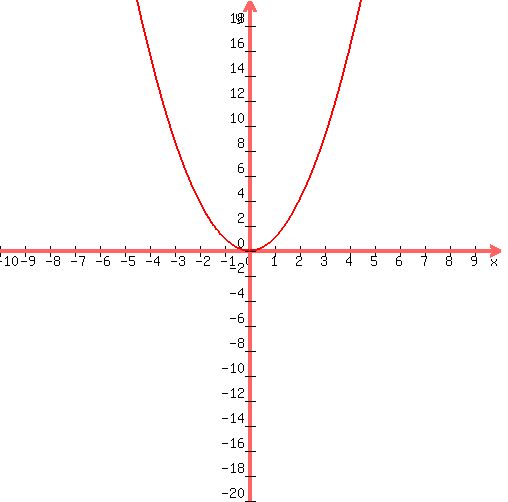Quadratic equation  (in our case (in our case  ) has the following solutons: ) has the following solutons:

For these solutions to exist, the discriminant  should not be a negative number. should not be a negative number.
First, we need to compute the discriminant  : :  . .
Discriminant d=0 is zero! That means that there is only one solution:  . .
Expression can be factored: 
Again, the answer is: 0, 0.
Here's your graph:
 |